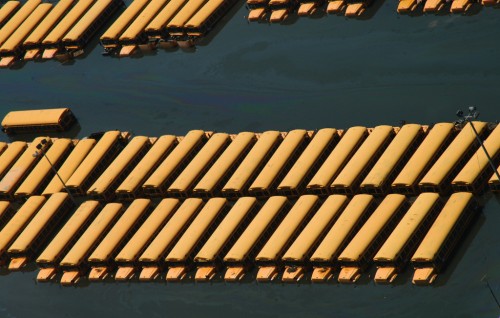This is what it looks like when government fails to protect its citizens:

When Hurricane Katrina hit, more than a quarter of people living in New Orleans in August of 2005 lived below the poverty line. Many of the poor in stayed at home to weather the storm. Why?
27% of New Orleanians didn’t own a car, making evacuation even more difficult and expensive than it would otherwise be.
People without the means to leave are also the most likely to rely on the television, as opposed to the radio or internet, for news. TV news began warning people how bad the storm would be only 48 hours before it hit; some people, then, had only 48 hours to process this information and make plans.
Poor people are more likely than middle and upper class people to never leave where they grew up. This means that they were much less likely to have a network of people outside of New Orleans with whom they could stay, at the same time that they were least able to afford a motel room.
For those who were on government assistance, living check-to-check, it was the end of the month. Their checks were due to arrive three days after the hurricane. It was also back-to-school time and many were extra cash poor because they had extra expenses for their children.
A study of New Orleanians rescued and evacuated to Houston, described here, found that:
…14% were physically disabled, 23% stayed in New Orleans to care for a physically disabled person, and 25% were suffering from a chronic disease… Also,
• 55% did not have a car or a way to evacuate
• 68% had neither money in the bank nor a useable credit card
• 57% had total household incomes of less than $20,000 in the prior year
• 76% had children under 18 with them in the shelter
• 77% had a high school education or less
• 93% were black
• 67% were employed full or part-time before the hurricane
The city failed to get information to their most vulnerable residents in time and they failed to facilitate their evacuation. The empty buses in flood water, buses that could have been filled with evacuees prior to the storm, is a testament to this failure.
Lisa Wade, PhD is an Associate Professor at Tulane University. She is the author of American Hookup, a book about college sexual culture; a textbook about gender; and a forthcoming introductory text: Terrible Magnificent Sociology. You can follow her on Twitter and Instagram.















